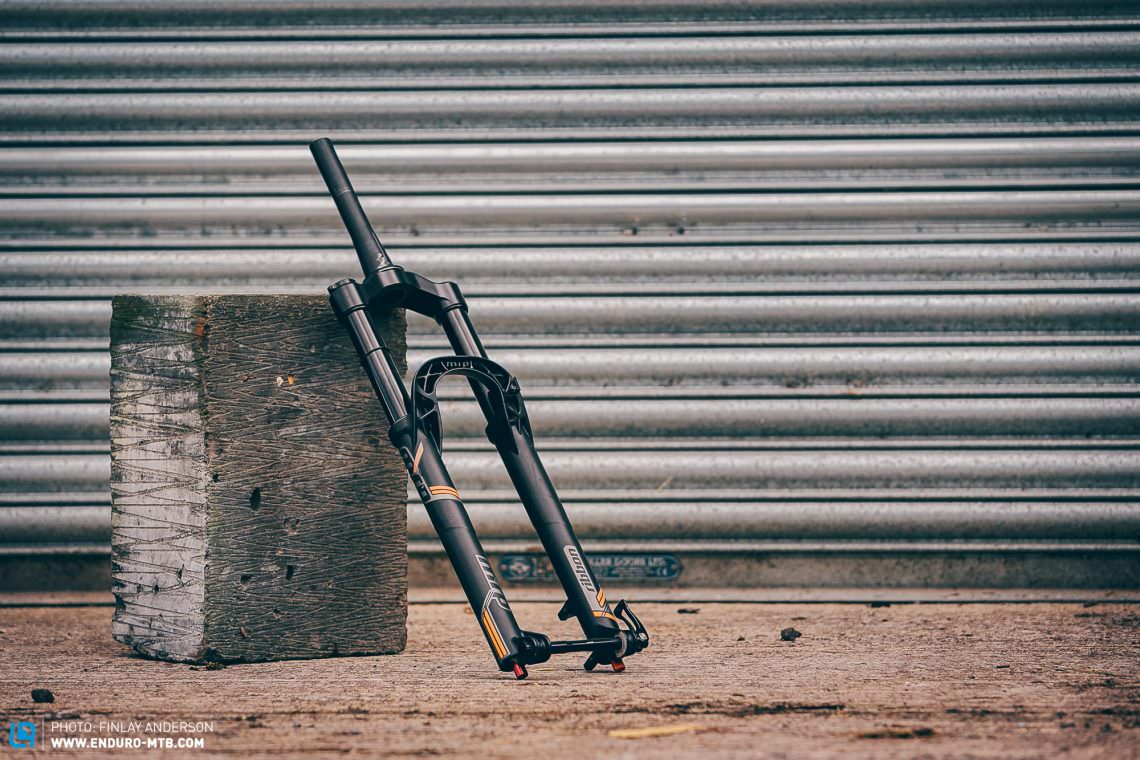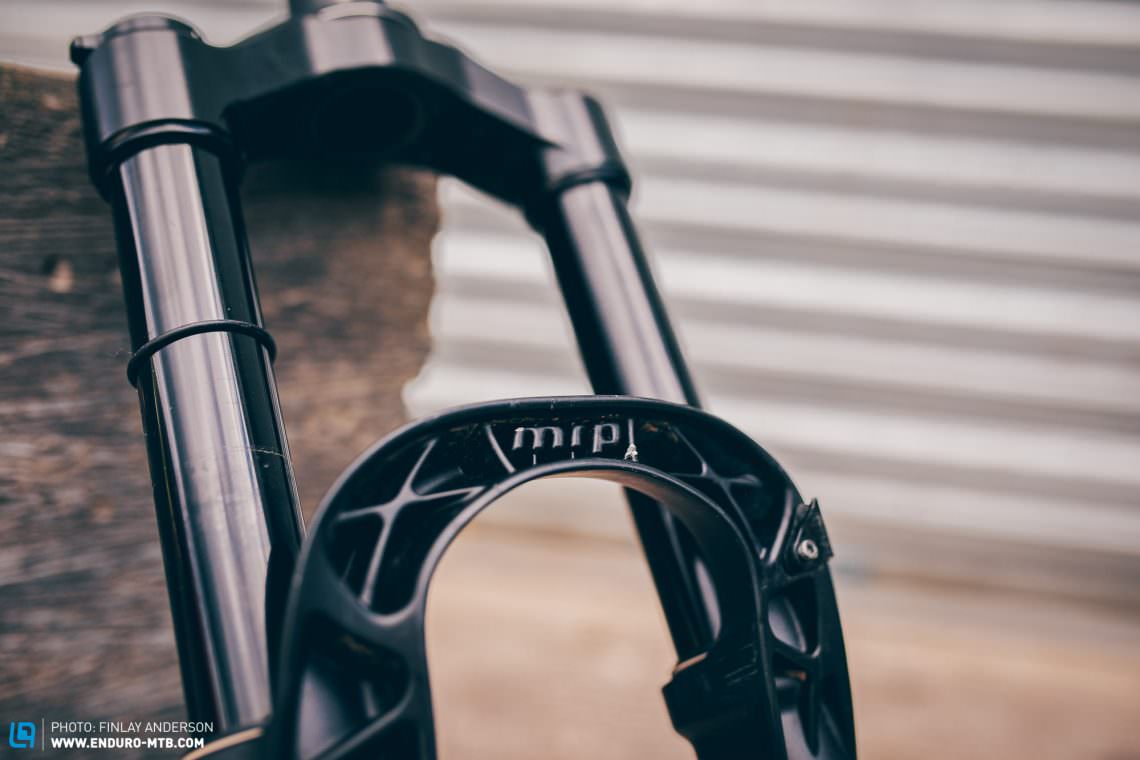Born on the awesome trails of Colorado, MRP should know a thing or two about suspension. Can the MRP Ribbon Coil handle the heat in this test?

MRP take production very seriously. Each fork is hand-built and assembled in Colorado in small batches and each finished fork is dyno tested before leaving the facility. The Ribbon is MRP’s enduro fork option, available in coil and air models in both 27.5” and 29” wheel sizes, in 150, 160 and 170 mm of travel and 140, 150 and 160 mm of travel respectively. The 2.24 kg MRP Ribbon Coil features the unique 20-position Ramp Control, available as an aftermarket option for other fork brands too. Ramp Control provides dynamic control of the progression of the spring. It works by forcing air through an adjustable port, which means that the higher the velocity of fork compressing, the higher the damping effect of the Ramp Control. In essence, this means that the Ramp Control has the most effect on high-velocity, end stroke situations, such as landing a jump or nosing into a tricky landing. Alongside the Ramp Control, the twin-tube, bladder-free damper is relatively simple with an 8-position low-speed compression adjuster and 18-position rebound adjuster. The distinctive Outcast arch is designed to stop mud building up behind the fork. It’s a nice engineering feature but style aficionados will be polarised. Small valves on the rear of the fork allow built air pressure (due to big changes in altitude) in the fork lowers to be equalised – useful if you live near a mountain.



Setup of the MRP Ribbon Coil
When it comes to setup, coil forks are normally the definition of simple. You choose the spring with the correct rate for your weight, drop it in, tweak the rebound and go shred. We have to applaud MRP for including the Soft, Medium and Firm springs as standard. However, we were frustrated that the internal diameter of the stanchion doesn’t allow the spring to be removed from the top, meaning you have to remove the Ribbon lowers to swap it. It’s not a massive job, but requires confidence and makes car park swaps (when initially testing) more problematic. Once we had the correct spring fitted and low-speed compression was adjusted to rider preference, it was time to hit the trails.
The MRP Ribbon Coil on the trail
On the trails, the MRP Ribbon delivers a mixed performance. Initial testing revealed that the fork is very sensitive over small bumps, soaking up trail chatter well. However, when we started to push hard, things started to unravel. The spring and damper perform well, but after riding the bigger chassis forks, and indeed other 35 mm forks like the Lyrik, the MRP Ribbon is less accurate and flexes more. The 35 mm chassis of the MRP feels springy through big hits, with more twisting at the dropouts than the Marzocchi Z1 Coil, RockShox Lyrik and Fox 36. Through rock gardens and deep compression turns, holding accurate lines was more of a challenge and we would reach for the brakes earlier. There were some positives. We found the Ramp Control was very effective at cushioning the end of the stroke for hard landings. However, with our 80kg testers running the recommended green ‘medium’ spring, the fork was too linear through the mid-stroke and on steep terrain we found we were sitting low in the travel. We found we had to dial in quite a lot of low-speed compression to stop the fork blowing through its travel on steep trails or on jump faces. While not a serious complaint, the fork is also very noisy, whooshing and squelching over impacts. On the other hand, it’s very light and comfortable though, mopping up small to medium hits effortlessly and tracking the ground well. It would suit trail riders looking for a smoother ride with fewer vibrations at the bars. We were expecting great things and the MRP Ribbon is not a bad fork for a trail bike, but compared to the super confident enduro forks in this test, it quickly feels outclassed.


We were expecting great things but compared to the super confident enduro forks in this test, it quickly feels outclassed.
How does the MRP Ribbon compare to the other forks?
The MRP Ribbon is a very plush and comfortable fork with exceptional sensitivity but as soon as you start pushing hard, it becomes unpredictable and flexy. The Marzocchi Bomber Z1 is a much better choice for those looking for a coil fork, although there is a considerable weight penalty. The MRP Ribbon Coil would make a good trail fork, but it is outclassed in this company.
Conclusion
Overall, the MRP Ribbon Coil proved a comfortable and extremely sensitive trail fork, albeit heavy. However, when pushed in rough terrain, riders will find it too flexy and lacking in support. Finding the right spring-rate is also frustrating. If you’re looking for a burly enduro fork, we would look elsewhere.
Tops
- very smooth small-bump performance
- Ramp Control does increase end stroke control
Flops
- lowers have to be removed to swap springs
- chassis flex leads to unpredictability
- linear feel and limited support
For more information, check out the Manufacturer’s website. If you want to learn more about mountain bike forks and see how the MRP Ribbon Coil stacks up against the competition, check out our 2021 suspension fork group test!
All forks on test: DVO Onyx SC D1 | FOX 36 2021 Grip2 Factory | FOX 38 2021 Grip2 Factory | Manitou Mezzer PRO | Marzocchi Bomber Z1 Coil | MRP Ribbon Coil | Öhlins RXF36 M2 Air | RockShox Lyrik Ultimate 2021 | RockShox ZEB Ultimate
Did you enjoy this article? If so, we would be stoked if you decide to support us with a monthly contribution. By becoming a supporter of ENDURO, you will help secure a sustainable future for high-quality mountain bike journalism. Click here to learn more.
Words: Photos: Finlay Anderson









